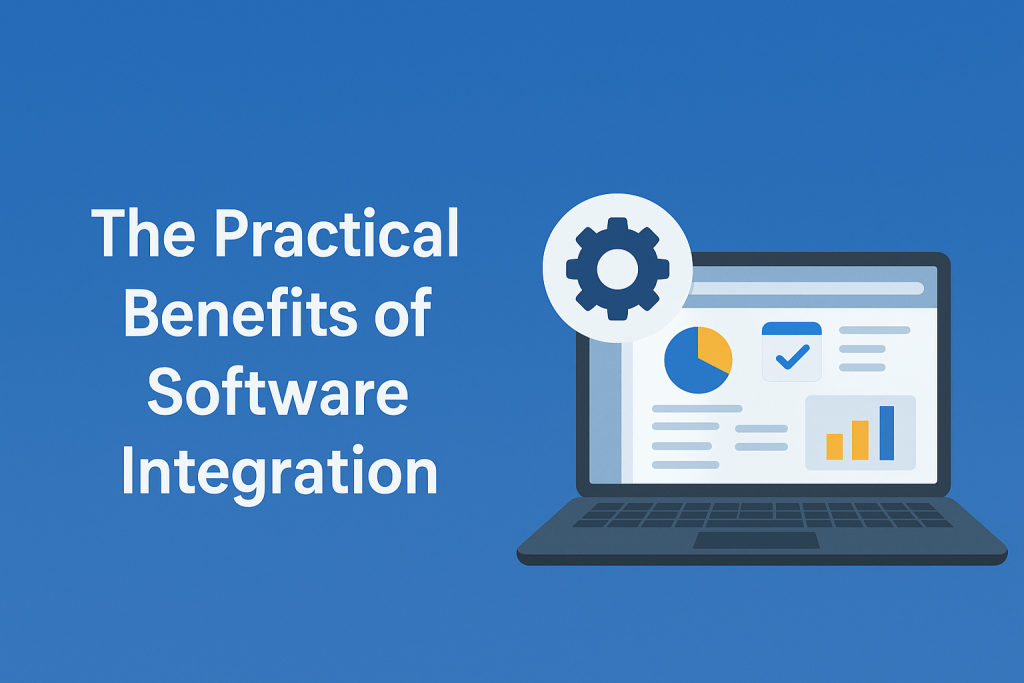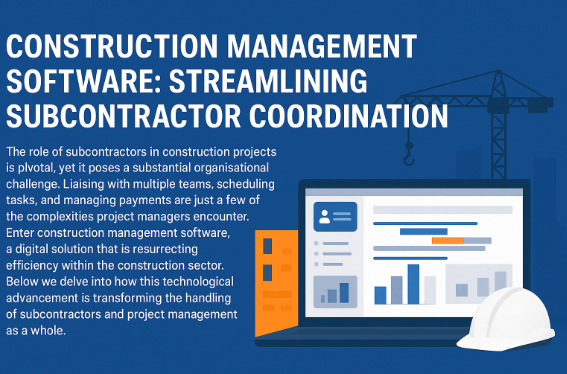The role of subcontractors in construction projects is pivotal, yet it poses a substantial organisational challenge. Liaising with multiple teams, scheduling tasks, and managing payments are just a few of the complexities project managers encounter. Enter construction management software, a digital solution that is resurrecting efficiency within the construction sector. Below, we explore how this technological advancement is transforming the management of subcontractors and project management as a whole.
The Revolution of Construction Software
Construction management software has been around for a while, but recent advancements have seen it become almost indispensable. With the ability to manage various project facets from a single platform, these systems are proving to be a game-changer, particularly when it comes to navigating the intricate dance with subcontractors.
Cutting-edge Financial Control
Among the most challenging aspects of managing subcontractors is ensuring financial transparency and control. This is where construction finance management software becomes vital. By integrating financial oversight into the broader project management ecosystem, software like Plexapro ensures that budgeting, invoicing, and payments to subcontractors are handled with meticulous accuracy and real-time oversight.
Enhanced Project Planning
The backbone of any successful construction project lies in its planning phase. With the utilisation of construction project planning software, project managers can craft detailed plans that include subcontractors’ roles, timelines, and responsibilities. This forward-looking approach not only streamlines processes but also anticipates potential challenges, allowing for proactive resolution.
Optimised Communication and Coordination
Efficient project management involves seamless communication channels. Construction management software provides platforms for updates, queries, and feedback to be exchanged effortlessly among all stakeholders, including subcontractors. Clear and consistent communication minimises misunderstandings and can significantly enhance the productivity of a project.
The Practical Benefits of Software Integration

By employing construction management software, project managers enjoy the luxury of having a consolidated view of all project aspects. What once took hours of manual coordination can now be achieved with a few clicks. But what are the tangible benefits for those managing subcontractors directly?
Real-Time Updates and Tracking
Keeping track of multiple subcontractors is made simpler with real-time updates. The software’s dashboard provides a snapshot of progress, including which subcontractors are on-site and which tasks are being completed, thus enabling project managers to take the pulse of the project at any time.
Document Management and Access
With a centralised document repository within the construction management software, all contracts, plans, and compliance documents related to subcontractors can be accessed with ease. This results in a massive reduction in documentation errors and ensures that all parties are on the same page.
Improved Accountability
Software accountability features mean that subcontractors are more likely to adhere to their deliverables. Timely completion of tasks can be tracked, and any deviations from the plan can be quickly addressed. This can lead to an overall improvement in the quality of workmanship.
Streamlined Cost Management
Handling the financial aspects of subcontractor management can be fraught with risk. However, construction management software minimises this by providing tools for accurate costing, automated invoicing, and payment tracking. This not only improves the transparency of financial operations but also enhances trust between contractors and subcontractors.
Efficiency Through Mobility
Modern construction management software is often mobile-friendly, enabling project managers and subcontractors to stay connected even when on the move. Mobile access allows for instant updates and decisions, reducing downtime and keeping the project on track.
Customisation and Scalability
One size does not fit all in construction management; each project has its unique challenges and requirements. The customisation and scalability provided by construction management software mean that it can adjust to the size and complexity of any project, ensuring that subcontractors are effectively managed regardless of the project’s scale.
Integrating with Emerging Technologies
The future of construction management also involves the integration of emerging technologies. Software that can easily integrate with things like Building Information Modelling (BIM), Drones for surveying, or Internet of Things (IoT) devices can provide a more comprehensive management experience and add layers of efficiency not previously possible.
The Bottom Line
In an industry that is becoming increasingly complex and competitive, embracing the capabilities of construction finance management software, construction project planning software, and other management tools is not just advisable but essential. The leverage that such software provides in handling subcontractors smoothly makes it a strategic investment—an investment that not only simplifies operations but also ensures that projects are delivered with quality, on time, and within budget.
Conclusion
In the final analysis, construction management software represents a significant leap forward in how projects are handled, making the coordination of subcontractors a more manageable, more controlled, and ultimately more successful endeavor. As construction companies look to the future, those implementing robust software solutions will find themselves at a considerable advantage in the efficient delivery of projects.





